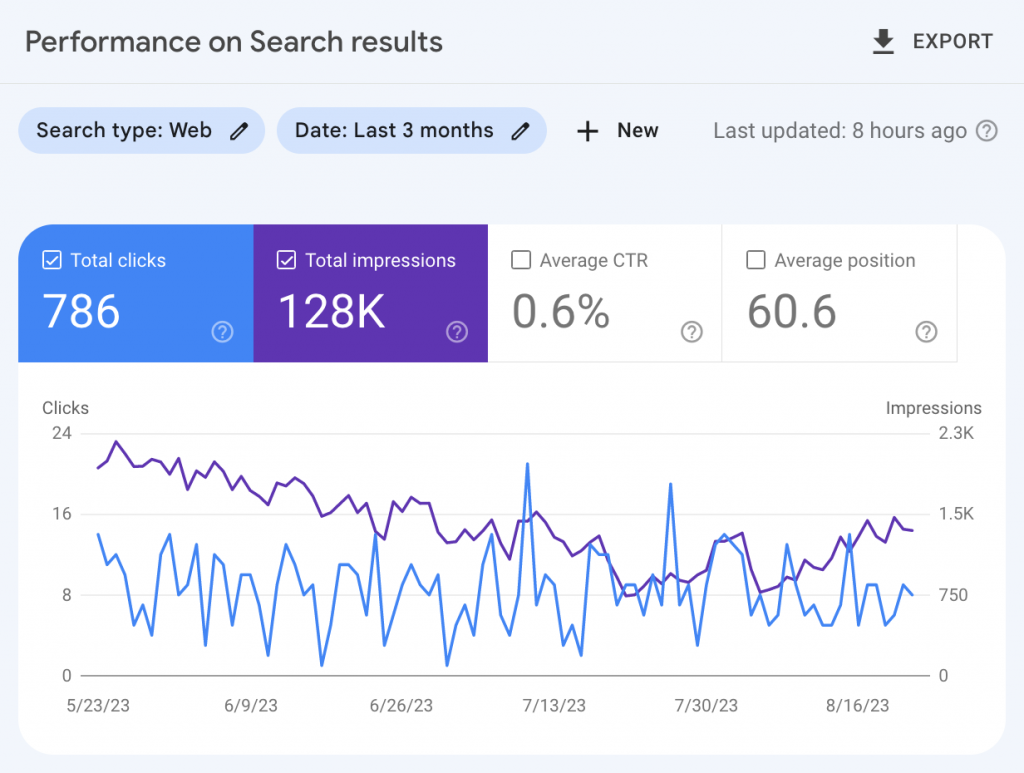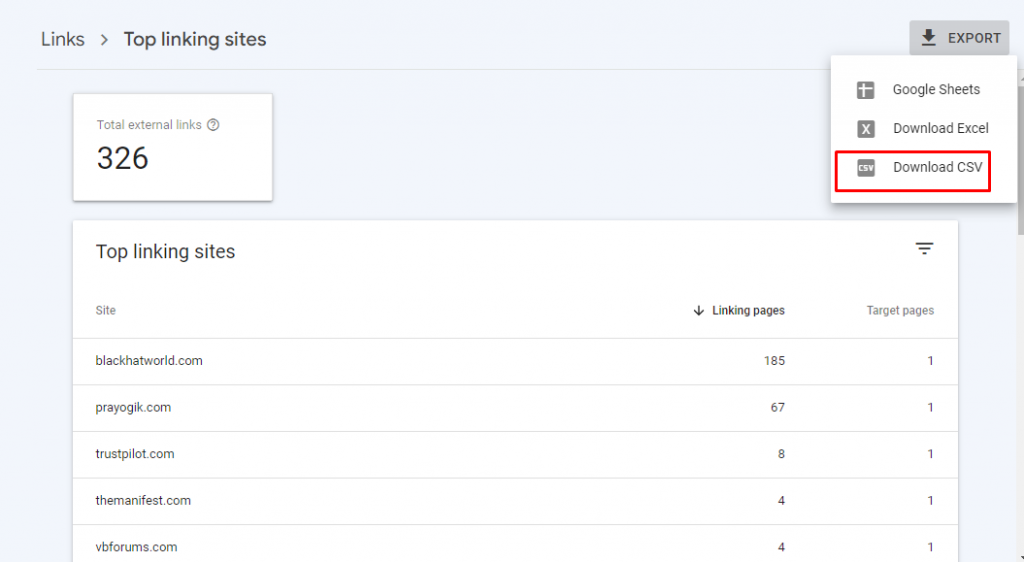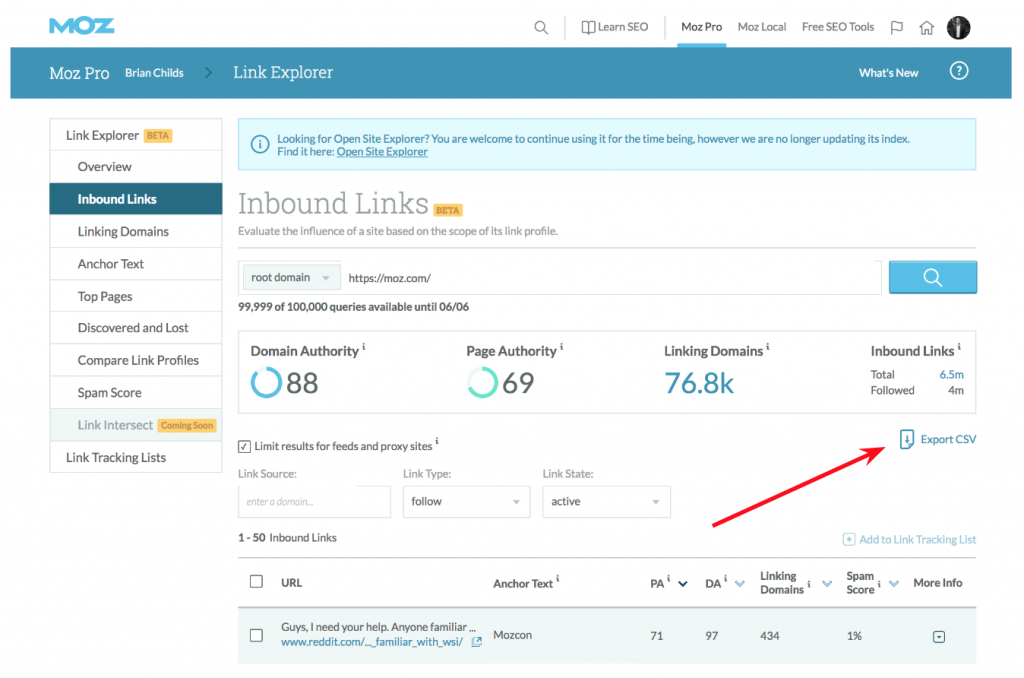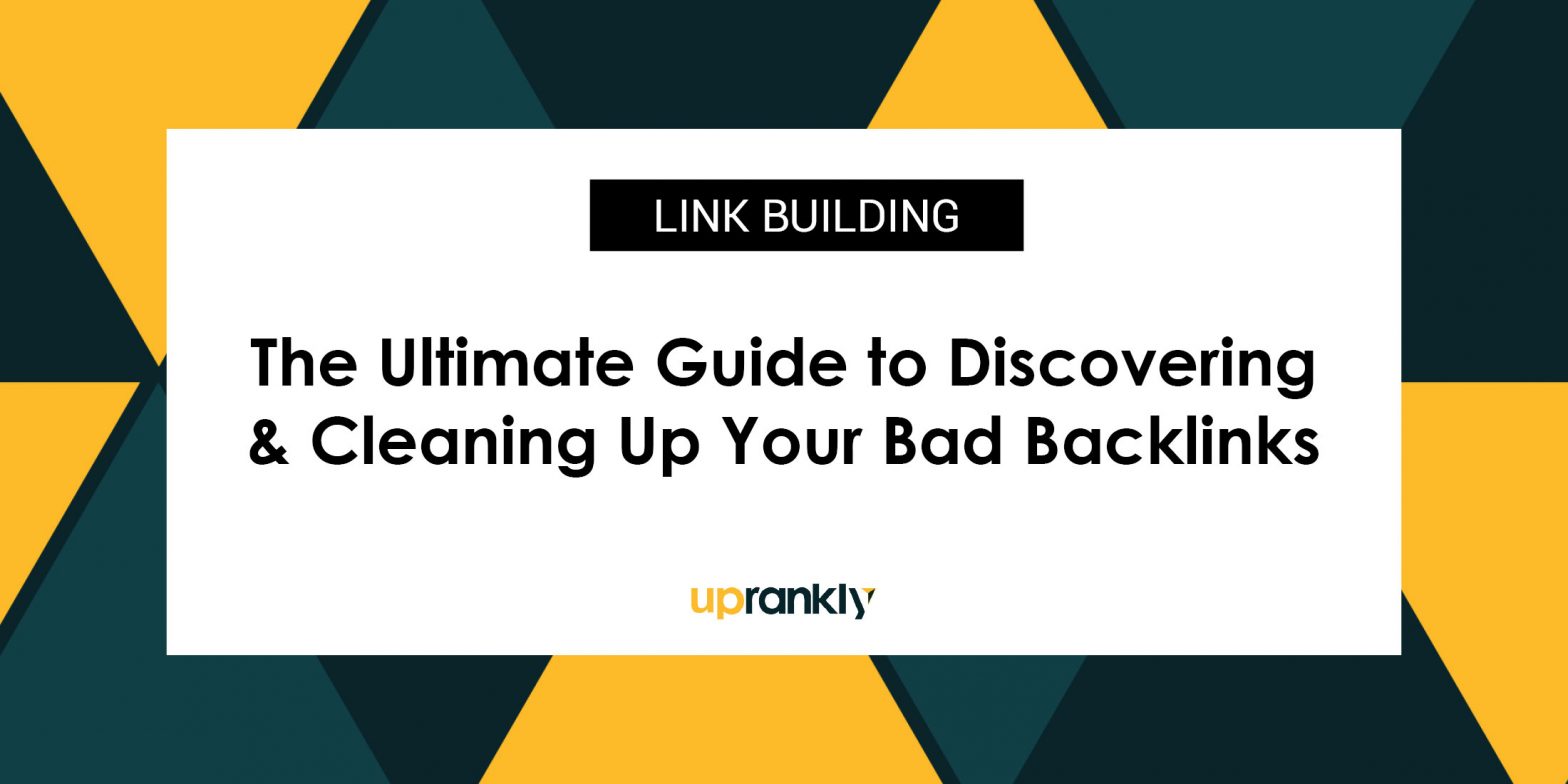Having bad backlinks pointing to your website can ruin your entire online marketing efforts, hinder your site from growing, and in some cases even cause a Google penalty.
It is therefore important to have a clean backlinks profile and remove all the bad backlinks that are adversely influencing your website’s rankings on Google’s search engine result pages (SERPs).
Similarly, monitoring and managing your backlinks is critical to having a long-lasting SEO result.
In this post, I’ll go beyond the regular search engine optimization tips and proffer an in-depth explanation about bad backlinks pointing to your website, how to discover these links, and how to clean them up.
So stick with me here.
Google perceives a website that has incoming links from other websites as a good and authoritative site and therefore deserves a higher position on the search engine result pages.
So a very fantastic way to prove to Google that you own a high-quality website is to have a good number of backlinks.
Just a heads up: not all backlinks would do the trick.
While quality backlinks would increase your site’s position on the SERPs, low-quality backlinks could potentially tank your entire SEO campaign.
This brings us to the next point:
Quality Backlink vs Bad Backlinks – What’s the Difference?
A quality backlink comes from an authoritative and relevant domain that has content similar to yours.
So, if the website linking to your site has a high domain authority and is within your niche, you will have a good backlink SEO score.
On the other hand, a low-quality or bad backlink comes from untrusted and unrelated sources.
To further understand what makes a link “high” or “low” quality, let’s have a quick look at what Google has to say on the matter.
Here’s what the first paragraph of the “link scheme” sections of their quality guidelines says:
What is a link scheme?
This may sound like each time you build a link with the aim of increasing your rankings on the SERPs, you’re violating Google’s guidelines. But that’s not the case.
Google wants you to create high-quality content and popular content that someone (an editor) can find valuable to their readers and link to it.
This is reinforced by the last paragraph of the article:
How to build links naturally?
To drive the point home, here are some examples of bad backlinks that you should avoid:
- Backlinks that are created automatically.
- Backlinks from unrelated sites.
- Backlinks from link schemes.
- Backlinks built with over-optimized anchor texts
- Link exchanges.
- Do follow backlinks.
- Backlinks from sites that are penalized by Google.
- Backlinks from sites with thin and auto-generated content.
- Links from blog networks.
How Harmful Are Low Quality or Bad Backlinks?
Bad backlinks can destroy all your good SEO work.
Google has already stated that its purpose is to ensure an excellent user experience by using search engine results to decrease users’ exposure to a bad website experience.
In other words, if Google perceives that a link is not adding any value to your website as well as its users, and the link has been put there in an attempt to send traffic to your website or simply enhance your page rank in the SERPs, Google will consider it a bad backlink.
When the number of bad backlinks exceeds the number of high-quality backlinks pointing to your site, it creates an imbalance in your backlink profile. This imbalance can cause Google to impose a manual or algorithm penalty on your website.
How to Collect All of Your Backlink Data Easily
It’s the best practice to collect all the data of your website’s Backlinks from as many sources as possible to ensure that no data is left out.
You can use any of these two ways to collect all of your Backlink data easily:
How to Collect Your Backlink Data Using Google Webmaster Tools
Step 1: Log in to Google Webmaster Tools
Step 2: Click on ‘search traffic’.

Step 3: Click on ‘Links to Your Site’
Step 4: Click on ‘more’ and then ‘who links the most’.

Step 5: Lastly, click on the ‘download more samples link button’ and Google will download all your website’s backlink data in a CVS file format.
How to collect Your Backlink Data using Open Site Explorer from the MOZ
Open Site Explorer from Moz offers another easy way to find backlinks to your website.
Step 1: Visit Open Site Explorer from Moz
Step 2: Enter your website URL and click on the search button.

Step 3: Click on the ‘request CSV’ button to get your backlink data.
Your backlink reports are now ready, one from Google Webmaster Tools, and one from Moz.
Ahrefs and Majestic SEO are other valuable tools that you could also use to get more backlink information.
How to determine the value of your Backlinks
Monitor Backlinks is an invaluable tool when it comes to determining the value of your backlinks. This tool allows you to import your CSV reports from GWT and also from MOZ. Additionally, it provides more insights that’ll help you identify the links that are worth keeping.
The tool collects backlinks from the most trusted sources and also uses analytics referrals as well as Ahrefs API. So there’s no way you will miss a link.
To import your backlinks reports, visit monitor backlinks and click on ‘add new backlinks’.
Add a new backlinks option on the Monitor Backlinks.
Next, navigate to the ‘import now’ Icon and click on it.
Import Now option on the Monitor Backlinks.
After uploading the CSV report that you exported from Moz or GWT, choose the number of links/domains you want to analyze on the monitor backlinks tool. The system automatically removes duplicate links.
If at any point in the future you want to see the source of the links, use the ‘tag imported links’ feature. For example, you can tag all links imported from GWT as “GWT Backlinks”.
Click ‘upload & import’ and within a short while the system will display all of the SEO metrics of your backlinks on the backlinks page.
The same process can be used to import all your links from other sources as well.
When you’re done with this step, it’s time to move on to the next step, which is identifying low-quality backlinks.
How to Identify Low-Quality Backlinks
1. Check if the website is ranking for its brand name
To do this, simply run a check on Google for the brand name of the website you’re trying to analyze. If the website ranks in the first position on Google SERP, then you can proceed to the next step.
2. Check Backlinks from Websites That Are Not Indexed By Google
If a website is not on Google’s index, it either means that the site has been penalized or banned from the search results, or it’s a very new website and Google has not crawled on it yet.
You should avoid building links from such sites because it could potentially tank your overall SEO campaign.
It’s the best practice to check and remove links from such sites manually since they’re bad for your SEO.
You can do this by using monitor backlinks filters. All you need do is to simply click on ‘Filters’ and then on “Domain and Page not indexed”.
You can also add a tag to a backlink that you want to remove by simply clicking on the settings icon on the right side of the backlinks row. When you tag such backlinks with the word ‘remove’, it makes it super easy for you to find them later.
3. Sort Backlinks by Domain PageRank & MozRank
Next, analyze all links coming from domains with PageRank 0.
Since this is the only PageRank SEO metric coming directly from Google itself, you need to take full advantage of it.
Step 1: To begin, click on ‘PR’
Step 2: Navigate to ‘lower than’
Step 3: Click on ‘0’ to choose to view domains that have a PageRank of 0.
Once you’re done with checking, analyzing, and tagging backlinks from websites with no PageRank, the next step involves filtering your links by their domain authority. Moz provides this metric and it’s updated often, which means it should be more accurate and relevant.
Choose to analyze websites with a domain authority of less than 20 or 10.
4. Check for Backlinks That Point to Your Site From Spammy Blog Networks
Google targets sites using spammy blog networks. In fact, spammy blog networks are a great way to get your site penalized. So if your site has backlinks coming from spammy blogs such as sites using spun content, you might want to remove them.
The best way to do this is to find backlinks from blogs using the same hosting IP.
Simply click on the ‘IP’ column and you will find a number on the right side of the flag. This number tells you the number of backlinks that your website has from that unique IP.
5. Check if Irrelevant Websites Such as Adult/Gambling Websites Link to You
A very important metric to consider when cleaning up your backlinks profile is relevancy.
You need to check if your website has backlinks from adult or gambling sites.
An easy way to do this is by clicking on ‘from’ and then typing in the keywords like casino, gambling, adult content, etc. Remove backlinks from adult websites.
6. Identify Bad Backlinks by Top Level Domain (TLD)
Analyzing the TLD of the websites that are linking to your site is a very fantastic way to detect bad backlinks.
The TLD of a website provides information about that website such as its purpose, the organization that owns it, as well as the geographical area where the website originates.
Examples of some popular TLDs include:
- .com
- .biz
- .ru
- . edu
- .gov etc.
For example, let’s say you have a local online store that sells products in Canada. It would make no sense to have backlinks from websites located in Nigeria, China or Cairo.
In Fact, it will raise a red flag and Google will think you are trying to game the algorithm, which will attract a penalty.
You can detect bad backlinks by using monitor Backlinks to filter your links by their TLD.
After completing the process of identifying all your bad backlinks, it’s time to remove as many as you can
How to get rid of bad backlinks
Google recommends building only natural backlinks and eliminating the bad backlinks.
To remove your bad backlinks, you will need to send out tailored emails to each webmaster of the sites that are linking to your website and ask them to remove the backlink to your site.
This part can be a little tricky and difficult.
However, don’t despair if you can’t remove all backlinks. You will be able to disavow the backlinks you can’t remove.
The Google Disavow tool enables site owners to tell Google that they don’t want certain links from external sites to be taken into consideration for SEO.
Here are a few tips to consider when doing link removal:
- Be polite when sending out your link removal request.
- Do not threaten the webmaster, else you will screw up your chances of removing your bad backlinks.
- Prepare a personalized email and don’t make it sound like you are using a template.
- Make the webmaster’s job as easy as possible by giving exact instructions with the location of the backlink you need to remove.
- Send a follow-up to make sure that your message was received.
This is how your link removal request should look like:
Template for link removal requests to the site admins
To start removing your bad backlinks, head back to Monitor Backlinks and load all the bad backlinks that you tagged as ‘remove’ in the first step.
When you have this information ready, take each link one after the other and try to reach out to the webmaster responsible for the website.
How To Find a Webmaster’s Email Address
There are a couple of ways that you can use to find someone’s email address or contact page.
Check the “contact page”
You can look up each backlink’s contact page and try to identify the webmaster or the person responsible for the content of that website.
However, this strategy is more useful for smaller sites or blogs because large websites may only post a generic contact email address that hardly makes it to the person (webmaster) you want to reach out to.
On smaller sites, there’s a greater chance of contacting the webmaster through the generic email.
Most often, this is how you will find the contact email address:
- Contact@site.com
- initial.lastname@website.com
- firstname.lastname@website.com
Check the ‘Author Page’
This works well both on smaller sites and on larger sites with multiple authors.
When you find the content manager that you are looking for, click on the name or image to view the whole profile.
Usually, on larger sites, you’ll find a list of the content manager’s social profiles, other websites and email addresses.
This may not be the case on smaller sites that use ‘about’ and ‘contact’ pages instead.
Use Email Hunter Browser Plugin
After you’ve rummaged through their site without any positive results, it’s time to head to Google search and type “FULL NAME LinkedIn” into the search bar.
Peruse the search results to track down their profile. With the email Hunter plugging installed in your browser, you’ll see a red button appear on their profile. Click on it and the plugging will try and find their email on LinkedIn.
After sending you backlink removal requests, it’s the best practice to give it a few days to a week for the webmasters to get back to you before you send you’re follow up email.
If you still don’t get a positive reply from the webmasters after a week, then it’s time to disavow all the bad backlinks you couldn’t remove.
How to Disavow the Bad Backlinks You Can’t Remove
Monitor backlinks can again help you create a disavow report.
To begin, select the backlinks that you have tagged to delete. Click on ‘with selected’ and then ‘disavow domains’.
Create a disavow report
A disavow report will be created with the backlinks that are contained in the ‘remove’ tag.
Once you have this report ready, log in to the Google disavow tool and upload the file.
Google disavow tool
It usually takes 1-3 weeks for the Google disavow tool to process the report. This should be the last resort against bad backlinks, so you should use it wisely.
When you start your link building strategy off on the right foot by following the best white-hat link building strategies, Google will give more credit to your website and consider your website more relevant than others on the search results pages for a search query, which also means a higher ranking.
The Importance of Adding New Backlinks Using White-hat Strategies
It’s no longer a secret that Google’s Penguin update punishes spammy links as well as any other link building technique that tries to game the system.
For the most part, Google has been successful in penalizing the black-hat link building strategies, which means it’s time to switch over to the more valuable white-hat link building strategies that work.
In fact, white-hat link building is the path modern-day SEO is following to increase website ranking on search engine result pages.
We’ve established earlier in this article that the more backlinks there are to a website, the higher the ranking power of that website on the search engine result pages (SERPs).
Here are some other benefits that come with building new backlinks to your website using white-hat strategies:
1. Greater Brand Awareness
Of course, ‘brand’ and ‘awareness’ are two concepts that are critical to the success of any business in today’s digital world.
By building positive links to your website, you’re establishing your site as an authority and an influential voice in your industry.
Publishing valuable content that generates links to your website solidifies your site as a leader and expert in your niche market.
With such a status, you get the opportunity to nurture your engaged audience and generate buzz around your website as well.
2. More Referral Traffic
Instead of using black-hat link building techniques that can have a negative effect on your website’s ranking, It’s in your best interest to choose white-hat link building techniques that will allow more people to discover your business online.
Naturally, more backlinks mean more gateways for people to discover who you are and the kind of service that you provide.
It’s also a fantastic way to qualify the kind of leads you generate for your website.
For example, when someone visits your website by clicking on an organic link, it’s easy to know that the person did so out of genuine interest in the kind of service you offer.
Think about it.
And since organic links come from relevant sites that are in the same niche market as yours, a well-placed link is a goldmine for potential customers who have an affinity for your business.
Backlinks are therefore super effective for capturing leads, nurturing those leads, and eventually converting the leads into loyal customers.
3. Greater Marketing Power
Your business website is the single most important marketing asset that you have. When your domain authority increases, your marketing power simultaneously increases.
And we all know how important marketing is to sales.
The best part of it is that, unlike social media, you have absolute control over everything that goes on in your website.
You can decide to leverage the increase in authority to skyrocket your revenue.
The more quality backlinks you have linking to your website, the greater your chances of increasing your revenue.
Check out this case study to see how one business leveraged white-hat link building and other SEO tactics to generate $100k in recurring income and #1 ranking.
Similarly, statistics have shown that 61% of online consumers make their purchase decisions based on recommendations from blogs and 81% of online consumers trust the information they get from blogs.
Check out our ultimate guide on white-hat link building strategies that work or contact one of our experts today if you need help in building high-quality links from real websites.
Final Words
If you want to have a successful SEO campaign, never neglect your site’s backlinks. They are the major ranking factors that determine the position of your site on the search engine result pages, and too many bad links can relegate your site to the background or even cause your site to be penalized.
But now that you know how to remove bad links to your site, your site should be safe from any link-related penalties and also rank higher on the search engine result pages.
Go ahead and build backlinks from high authority sites in your niche and filter those backlinks that are harming your rankings.
What are the methods you use to find & discover backlinks? Have you ever experienced a link-based penalty before?
Feel free to drop your comments in the box below.
Want to outsource your link building service?
Contact us today and get your link building project started right off the bat.
Our team of passionate SEO and internet marketing experts is dedicated to helping you succeed.
